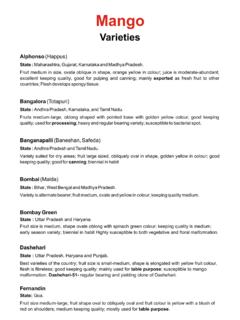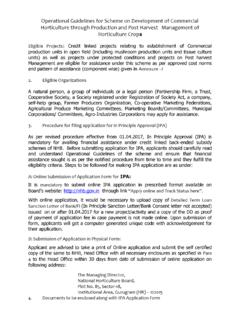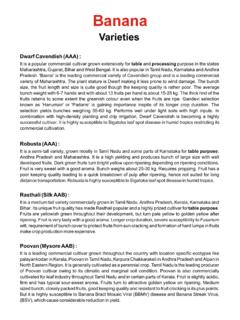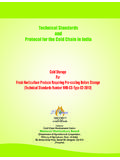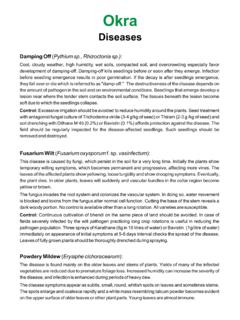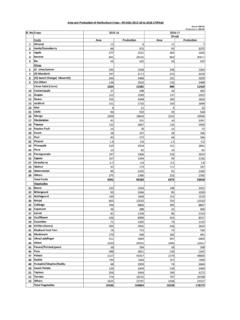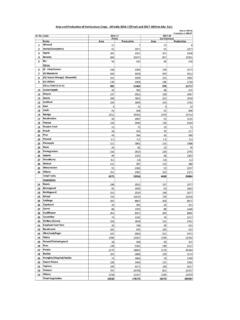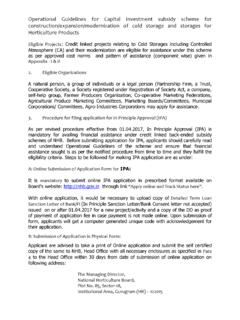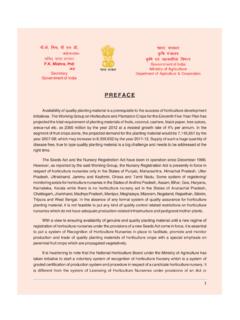Transcription of Mango - NHB
1 MangoHarvesting In western India, Mango puts forth three growth flushes, the first are in the earlyspring (February-March), the second during March-April and the third in the beginning of winter (October-November). In Bihar, the first growth noticed in early spring, the second in April-May and the third in July-August. In UP, only two flushes are produced, in March-April and July-August. In Punjab, as many as five flushes are produced from April-August. April and Mayflushes being found most heavy. In South India, Mango usually gives two growth flushes, one in February-June and the other in October-November. In Mango about 8-10 months old shoots under certain conditions cease to grow at least 4 months prior to blossoming. These shoots are capable of producing flower buds. Other shoots, which appear in subsequent flushes during late monsoon, do not come to flowering. These shoots flower during the next season after accumulating sufficient metabolites necessary for fruit-bud differentiation.
2 Thus the fruits will be ready for harvest in April-May from a plant flowered during major harvesting seasons in different states are:StatesMaharashtraGujaratTamil NaduAndhra PradeshKarnatakaBihar, Uttar Pradesh and other parts of North IndiaMonth of HarvestApril-May (Ratnagiri)May-June (other areas)May-JuneApril-MayApril-May (coastal districts)May (Rayalaseema)May-JulyJune-AugustThe Mango fruits should be harvested at green mature stage. In case of Alphonso mangoes the fruit is considered to be mature when the shoulder outgrow the stem and the external colour becomes light green with a yellowish red blush. The harvest maturity in Dashehari and Langra cultivars reaches 12 weeks after fruit set, while in Chausa and Mallika it takes about 15 weeks. The best way to observe maturity in Mango is the colour of the pulp, which turns cream to light yellow on maturity and hardening of stone. Mangoes are generally harvested at physiologically mature stage and ripened for optimum quality.
3 Fruits are hand picked or plucked with a harvester. During harvesting, the latex trickles down the fruit surface from the point of detachment imparting a shabby appearance to it upon storage. Therefore the fruits should be harvested with a 10-20cm stem attached to it. For efficient harvesting of mangoes a simple, low cost and portable Mango harvesting device has been designed and developed at the Central Institute for subtropical horticulture, Lucknow. Mango fruits are taken into the pouch and held between the divider and knife and as the device is pulled, the blade cuts the stalk. The fruits are then conveyed through a nylon chute to collecting boxes without bringing down the device every time. This saves time and protects fruits from mechanical damage due to impact. It also protects operator's hand from the sap, which oozes out from the point of detachment. On an average, a man can harvest about 800 to 1000 fruits per hour with the help of this device, depending on the skill of the worker, fruiting and height of the tree.
4 It consumes 50 per cent less energy as compared to local methods. Harvested mangoes should be placed in field containers of not more than 25 kg capacity for movement to the packing shed. The fruit should be kept in the shade and handled carefully at all times after harvest.

